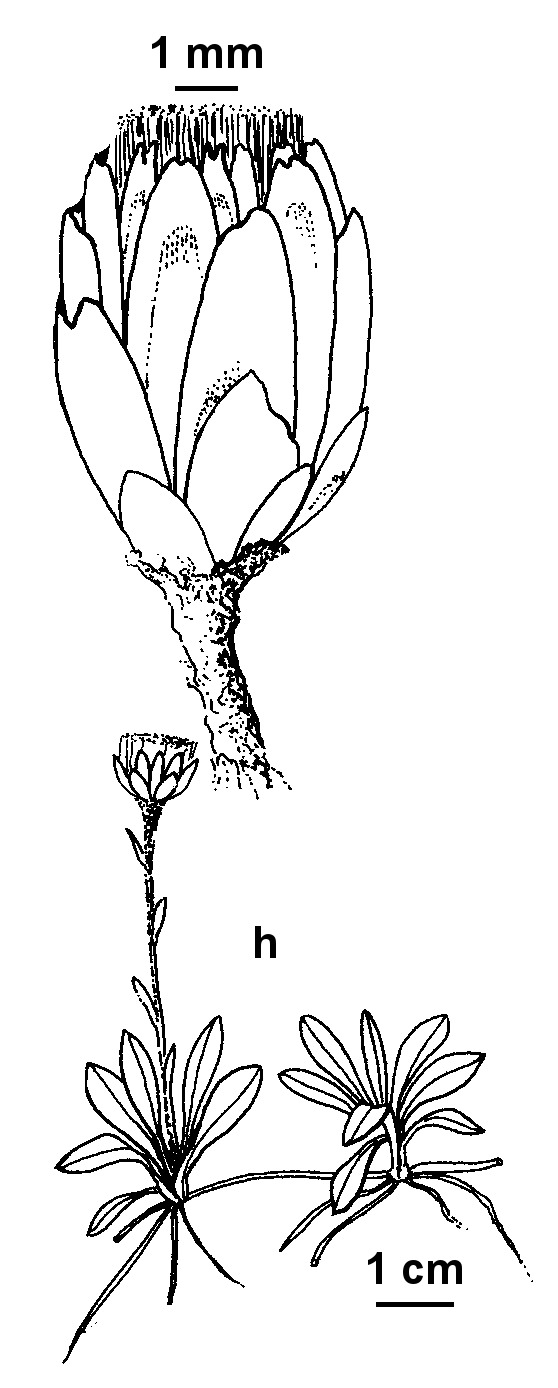Euchiton traversii
(Hook.f.) Anderb.Tufted, rhizomatous perennial, occasionally forming loose mats. Leaves all or mostly rosetted, oblanceolate, obovate or spathulate, 1.5–3(–5) cm long, 3–7(–10) mm wide, both surfaces silver-grey or whitish with dense, appressed cottony hairs. Flowering stems erect, 1–5 cm high (to 10 cm in fruit) with 1–5 much reduced leaves. Inflorescence a solitary, terminal capitulum, not immediately subtended by leaves. Capitula campanulate or cup-shaped; inner bracts c. oblong, 5–6.5 mm long, obtuse, usually with a red-purple band just below the straw-coloured tip; bisexual florets 8–15. Cypselas c. 1 mm long, sparsely hairy. Flowers Dec.–Feb.
EGU, HSF, HNF, VAlp. Also NSW, Tas. New Zealand. Occasional in damp grassland communities of the eastern alps (e.g. Snowy Range, The Bluff, Bogong High Plains, Nunniong Plateau, Cobberas).
Distinguished from the similar Argyrotegium mackayi by the larger, strictly solitary capitula, and the usually larger, distinctly rosetted leaves.
Walsh, N.G. (1999). Euchiton. In: Walsh, N.G.; Entwisle, T.J., Flora of Victoria Vol. 4, Cornaceae to Asteraceae, pp. 820–825. Inkata Press, Melbourne.
 Spinning
Spinning

